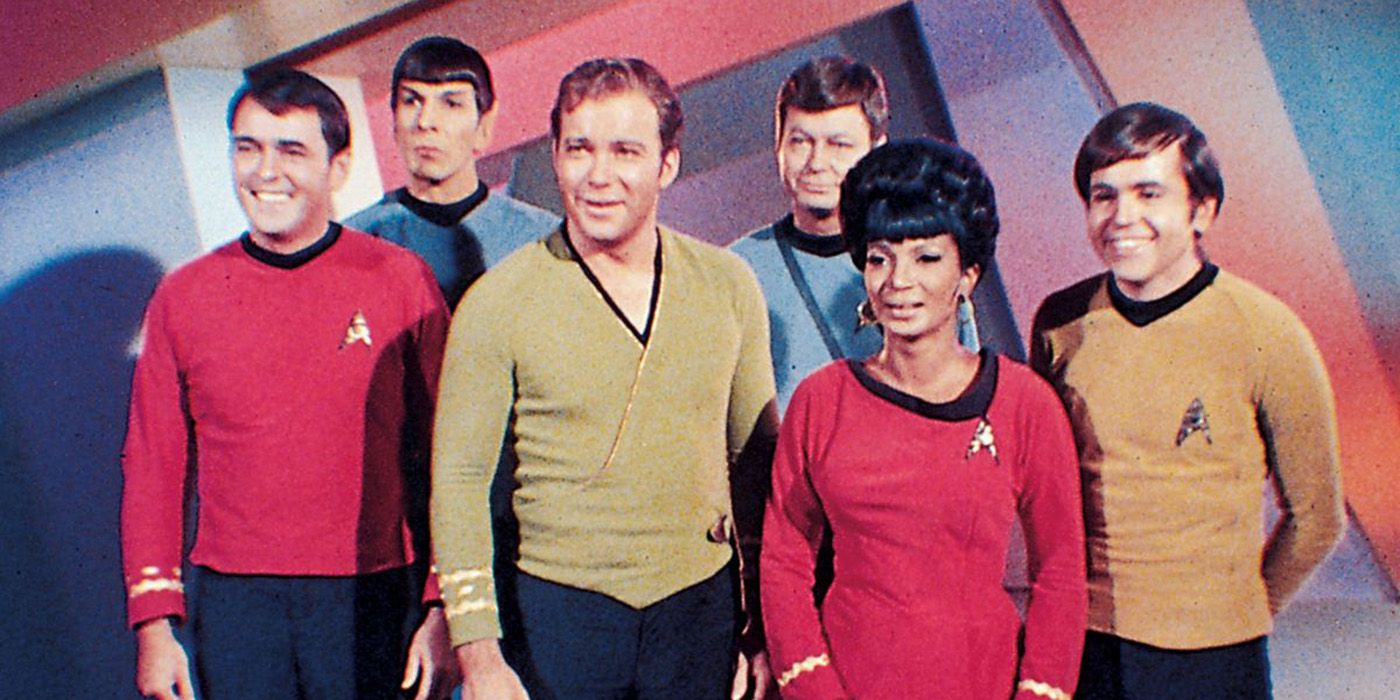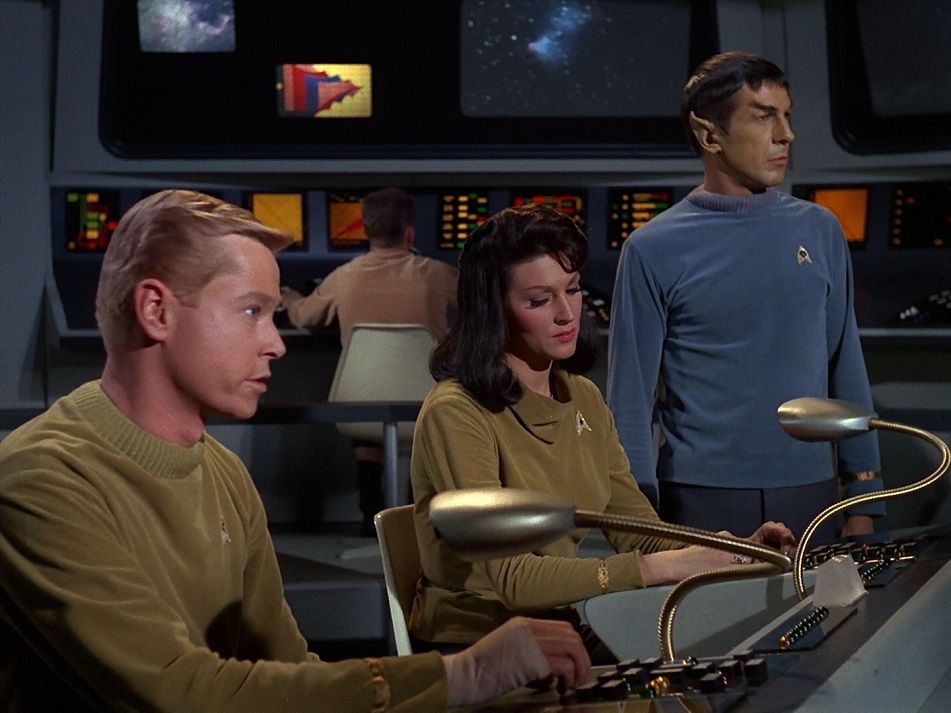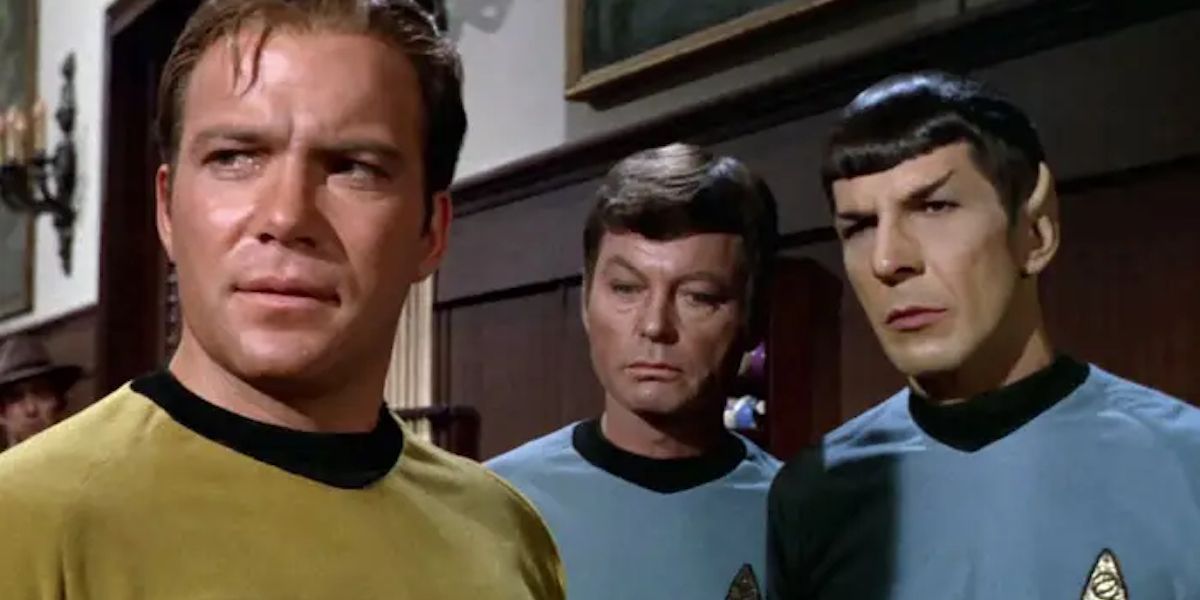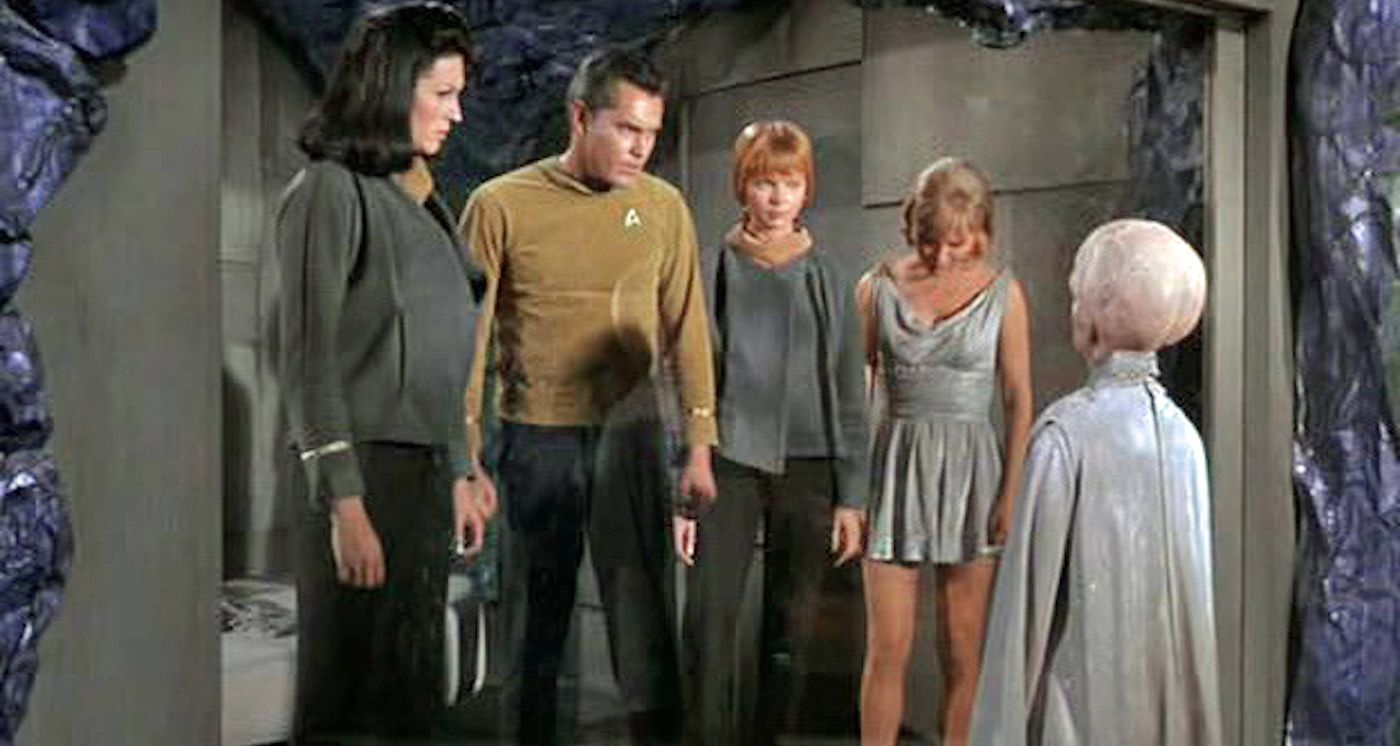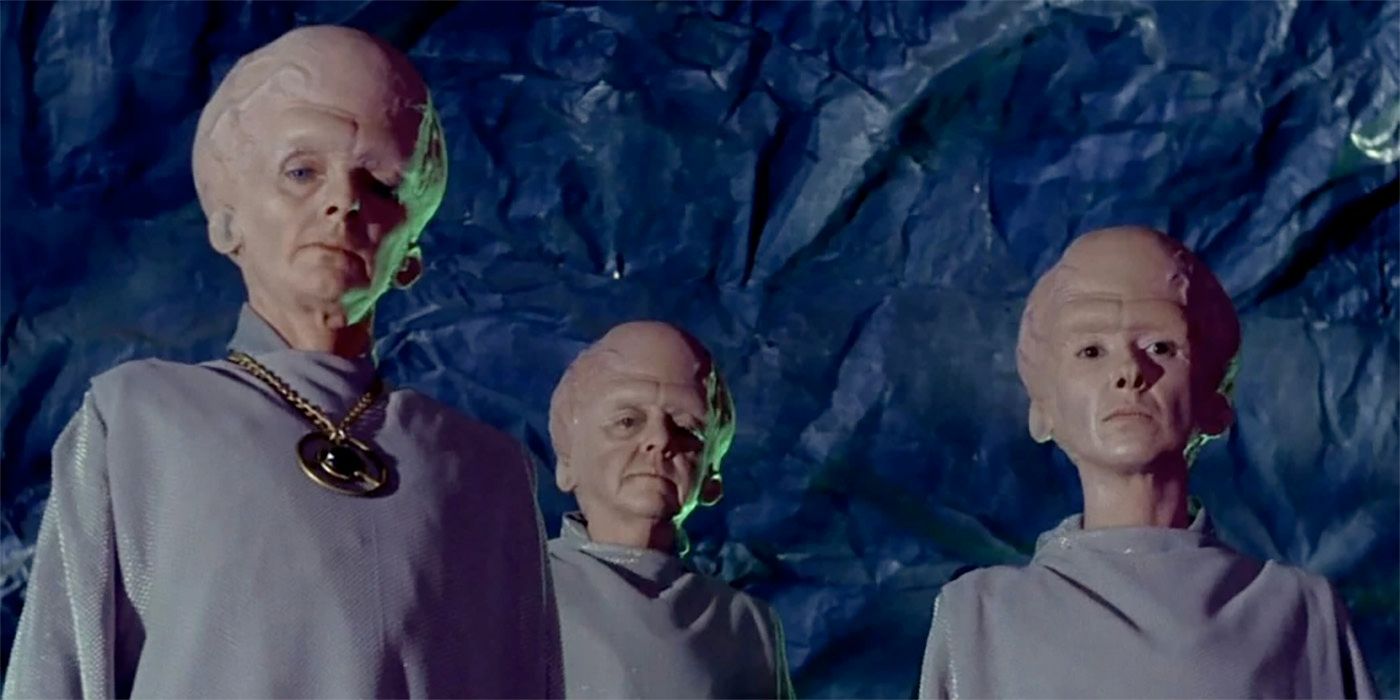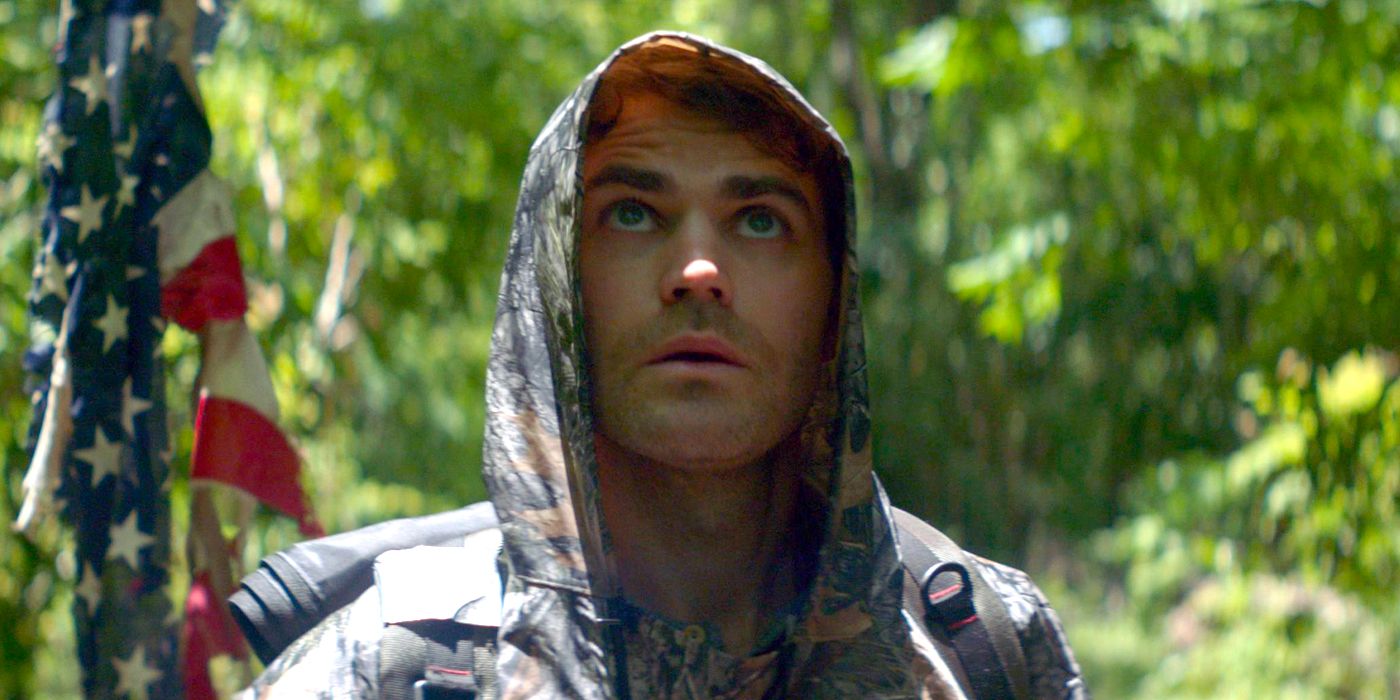The Big Picture
- “The Cage,” the first pilot of Star Trek: The Original Series, was initially rejected by NBC for being too cerebral and was later reworked into a two-part episode titled “The Menagerie.”
- Lucille Ball’s involvement and financial support played a crucial role in convincing NBC to order a second pilot and ultimately launch Star Trek: The Original Series.
- “The Cage” was largely inaccessible for decades until its release on home video in 1986 to commemorate the franchise’s 20th anniversary, and it later aired in its original form in 1988.
On September 8, 1966, the world first caught sight of the USS Enterprise and its crew of cosmic explorers when Gene Roddenberry‘s Star Trek: The Original Series premiered on NBC. Igniting what would become a multimedia empire made up of television, films, novels, comic books, and video games, Roddenberry’s original series laid the foundation for a cultural milestone revered by devoted and casual fans around the world to this day. But like all iconic entertainment, Star Trek’s road to pop culture glory had its share of bumps along the way, not the least of which included behind-the-scenes hurdles predating its premiere as a series. While The Original Series is often — and deservedly — championed for prioritizing progressive ideas and richly defined characters over action and spectacle, the seminal sci-fi franchise hasn’t always received the warmest welcome from viewers preferring genre thrills, and Gene Roddenberry found this out the hard way when the series’ first pilot, “The Cage,” was met with crickets by NBC’s network brass.
Star Trek: The Original Series
In the 23rd Century, Captain James T. Kirk and the crew of the U.S.S. Enterprise explore the galaxy and defend the United Federation of Planets.
- Release Date
- September 8, 1966
- Cast
- William Shatner, Leonard Nimoy, Nichelle Nichols, George Takei, Deforest Kelley, James Doohan, Walter Koenig
- Main Genre
- Sci-Fi
- Genres
- Action, Adventure
- Seasons
- 3
- Franchise
- Star Trek
- Creator
- Gene Roddenberry
What Is “The Cage” About?
Written by Roddenberry and produced nearly two years before Star Trek: The Original Series officially debuted, “The Cage” follows the USS Enterprise as it investigates a distress signal from a distant planet. Aside from Leonard Nimoy, the actors who would ultimately comprise the series’ crew were not featured, and in the Captain’s chair was Jeffrey Hunter as Christopher Pike. After beaming down to the planet Talos IV, Pike and his crew discover a group of scientists stranded eighteen years before. Particularly taken with the beautiful Vina (Susan Oliver), Pike suddenly finds himself captured and held by the Talosians, a subterranean, humanoid alien race.
Harnessing their telepathic ability to construct and project powerful illusions into the minds of others, the Talosians alter Pike’s perception of Vina, presenting her as a seductress in hopes of using the couple as breeders to repopulate the planet with slaves. Battling their persistent efforts to break him down and entice lustful desires, Pike confounds the Talosians by consistently displaying anger and resistance to the notion of captivity, exhibiting primal human instincts that render their telepathic powers ineffective. Realizing they won’t succeed with their plan, the otherworldly beings release Pike, and Vina, whose true appearance is revealed to be a far cry from the fetching presentation the Talosians projected into the Captain’s mind, opts to remain on the planet so long as she can maintain her beautiful yet illusory self-image.
NBC Rejected “The Cage” and Ordered a Second Star Trek Pilot
While “The Cage” features numerous hallmarks that would define Star Trek — philosophical ideas, aliens, a green space girl, phasers — NBC reportedly considered the $600,000 pilot to be “too cerebral.” In his book The Making of Star Trek, Stephen Whitfield writes, “NBC felt the show would go over the heads of most of the viewers, that it required too much thought on the part of the viewer in order to understand it.” In an unprecedented move at the time, the network ordered a second pilot and recast it with the performers who would play the Enterprise’s iconic crew across three seasons and six subsequent feature films.
A crucial yet perhaps little-known bit of trivia surrounding the second pilot, titled “Where No Man Has Gone Before,” was Lucille Ball‘s involvement. Alongside husband Desi Arnaz, Ball oversaw Desilu Productions and the studio space where “The Cage” and “Where No Man Has Gone Before” were shot. She was instrumental in persuading NBC to order a second Star Trek pilot and contributed to its financing. According to executive Ed Holly, “If it were not for Lucy, there would be no Star Trek today.” To boost its chances of avoiding anything overly heady and logistically complex, NBC considered three screenplays and reduced the episode’s budget from $600,000 to $300,000. “Where No Man Has Gone Before” was completed in January 1966 and, having won the approval of the network, Star Trek: The Original Series was given the green light to premiere the following fall.
“The Cage” Was Later Incorporated Into a Two-Part Star Trek Episode
Though it was promptly scrapped in early 1965, “The Cage” would be resurrected via a two-part episode midway through Star Trek: The Original Series‘ first season. Written by Gene Roddenberry and dubbed “The Menagerie,” the first half introduces Captain Pike who, after suffering an accident, is physically paralyzed but retaining cognitive function. Having served alongside the Captain 13 years before, Spock (Nimoy) hatches a plan to take Pike back to Talos IV, where, under the Talosian’s powers of perception, he could live out the remainder of his days in peace and a healthy physical condition. Obscuring his true intentions from Captain Kirk (William Shatner) and Starfleet, Spock absconds with Pike, takes control of the Enterprise, and sets a course for Talos IV.
Employing a bit of cleverly structured storytelling, “The Menagerie” incorporates “The Cage” via flashbacks. During a hearing to determine whether Spock will be the subject of a court-martial for his mutinous actions, Kirk and other officers view the events of “The Cage” onscreen, and audiences are bounced back and forth between Pike’s experience on Talos IV and that of the present moment. Upon learning the truth surrounding Pike and Spock’s history, and realizing the court-martial hearing was an illusion put on by the Talosians to buy time for their journey, Kirk allows the ailing Captain to reunite with Vina on the planet. Seamlessly fusing two narratives, “The Menagerie” retroactively incorporates the series’ rejected pilot into its current canonical timeline, honoring the original material while simultaneously giving Captain Pike a circular narrative arc that ends with closure. Despite its inclusion in a highly-rated installment of Star Trek’s original series, the story behind “The Cage” as its first pilot would not be widely known for years.
“The Cage” Wasn’t Accessible In Its Original Form for Decades
After its inclusion in “The Menagerie,” “The Cage” was largely unavailable as a standalone episode for twenty years. According to The Hollywood Reporter, “The Cage” was seen by only a handful of avid fans at Star Trek conventions until 1986, when it was released on home video to mark the franchise’s 20th anniversary. It later aired in color and its original form for the first time in 1988 as part of a special hosted by Patrick Stewart. While it may have been relegated to relative obscurity in the decades since Star Trek: The Original Series‘ debut, the seemingly abandoned pilot’s eventual revival greatly contributed to one of the series’ more favorable and creatively ambitious episodes, thanks in no small part to an ingenious and resourceful use of previously scrapped content.
Star Trek: The Original Series is currently available to stream on Paramount+ in the U.S.
Watch on Paramount+

